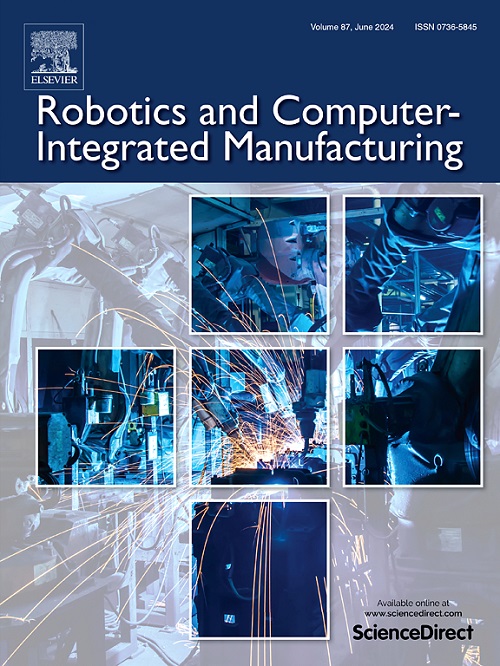A framework for integrated design of human–robot collaborative assembly workstations
IF 11.4
1区 计算机科学
Q1 COMPUTER SCIENCE, INTERDISCIPLINARY APPLICATIONS
引用次数: 0
Abstract
Collaborative robotics is increasingly considered in manufacturing to improve efficiency while reducing operators physical and cognitive workloads. However, the lack of comprehensive methodologies has limited the consistent implementation of human–robot collaborative workstations across industries. Existing approaches are often fragmented, require robotics expertise, and pose challenges for non-experts, leading to suboptimal station designs and inefficient task allocation. This study presents a structured design framework to transition traditional assembly processes into collaborative ones. The framework provides a practical, scalable solution for optimizing collaborative workstations, balancing performance, ergonomics, and industrial applicability. It starts from the analysis of the assembly tasks, followed by classification and allocation between human operators and robots, and concludes with virtual prototyping and performance optimization through simulation using a commercial tool. The adopted methodology integrates task analysis, ergonomic assessment, and workspace design to ensure accessible and efficient implementation. Validated through two industrial case studies involving a gear pump and a worm gearbox, the approach demonstrated significant reductions in cycle time and notable improvements in the ergonomic working conditions. Additionally, physical prototyping and testing conducted within a research collaborative cell further confirmed the achieved results.
人机协同装配工作站集成设计框架
协作机器人越来越多地应用于制造业,以提高效率,同时减少操作员的身体和认知工作量。然而,缺乏全面的方法限制了跨行业的人机协作工作站的一致实现。现有的方法往往是碎片化的,需要机器人专业知识,并对非专家构成挑战,导致次优的工作站设计和低效的任务分配。本研究提出了一个结构化的设计框架,将传统的装配过程转变为协作的组装过程。该框架为优化协作工作站、平衡性能、人体工程学和工业适用性提供了一个实用的、可扩展的解决方案。首先对装配任务进行分析,然后对操作人员和机器人进行分类和分配,最后利用商业工具进行仿真,进行虚拟样机和性能优化。采用的方法集成了任务分析、人体工程学评估和工作空间设计,以确保可访问和有效的实施。通过两个涉及齿轮泵和蜗杆齿轮箱的工业案例研究,该方法证明了循环时间的显著缩短,并显着改善了符合人体工程学的工作条件。此外,在一个研究协作单元内进行的物理原型和测试进一步证实了所取得的成果。
本文章由计算机程序翻译,如有差异,请以英文原文为准。
求助全文
约1分钟内获得全文
求助全文
来源期刊
CiteScore
24.10
自引率
13.50%
发文量
160
审稿时长
50 days
期刊介绍:
The journal, Robotics and Computer-Integrated Manufacturing, focuses on sharing research applications that contribute to the development of new or enhanced robotics, manufacturing technologies, and innovative manufacturing strategies that are relevant to industry. Papers that combine theory and experimental validation are preferred, while review papers on current robotics and manufacturing issues are also considered. However, papers on traditional machining processes, modeling and simulation, supply chain management, and resource optimization are generally not within the scope of the journal, as there are more appropriate journals for these topics. Similarly, papers that are overly theoretical or mathematical will be directed to other suitable journals. The journal welcomes original papers in areas such as industrial robotics, human-robot collaboration in manufacturing, cloud-based manufacturing, cyber-physical production systems, big data analytics in manufacturing, smart mechatronics, machine learning, adaptive and sustainable manufacturing, and other fields involving unique manufacturing technologies.

 求助内容:
求助内容: 应助结果提醒方式:
应助结果提醒方式:


